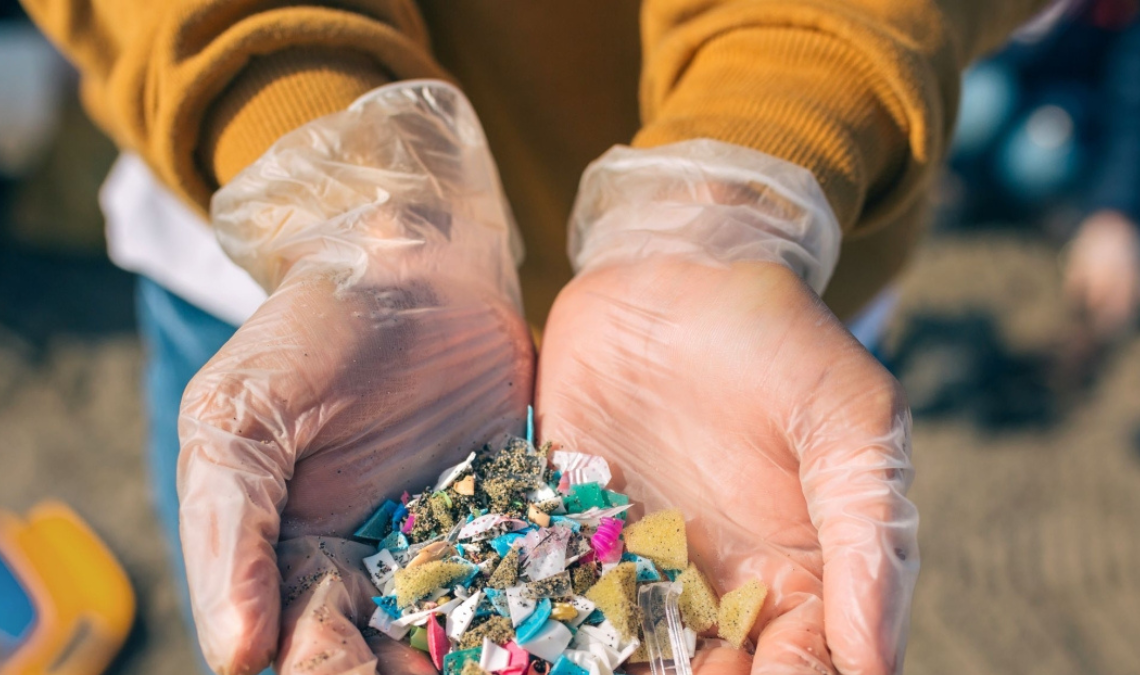
Tiny bits of plastic float around in our water and can harm sea animals. Once these tiny plastics get in the water, it’s tough to remove them. So, it’s essential to stop them from entering in the first place. Walking barefoot on the beach feels refreshing, but what’s under your feet isn’t just sand. Microplastic particles—smaller than 5 mm—are now mixing with the sand. Beaches contain only a small fraction of the problem; most microplastics are in the ocean. An estimated 5.25 trillion plastic particles float on the ocean’s surface, weighing 269,000 tonnes. Over time, bacteria and algae make these plastic bits heavier, causing them to sink. Sadly, even the ocean’s depths now have microplastic pollution.
What Are Microplastics?
Plastics are helpful in many ways, from making toys to packaging food. However, people are beginning to wonder if we should use less plastic since much of it ends up in oceans, rivers, and lakes. They can break down from larger plastic items like bottles or bags or come directly from products such as cosmetics and cleaning supplies. These small plastic fragments cause new environmental problems because they’re so small and hard to remove.
There are two types of plastic fragments: primary microplastic particles, which are made for products like toothpaste, makeup, and cleaning items ; and secondary plastic fragments, which form when larger plastics break down into smaller pieces. Plastic fragments also come from synthetic polyethylene plastic, known as microbeads, which are added to certain cosmetics as exfoliants. These particles end up in the ocean, where they pose a danger to marine life.
How Do Microplastics Affect Us?
Plastic particles are all around us, and they could harm our health. To stay safe, we need to understand how people come into contact with plastic particles. The main ways are through eating, breathing, or touching them. The most common way is by accidentally swallowing them in food or water. Plastic particles move through the air, water, and soil, which increases the chance of contact. Scientists call this movement the “plastic cycle,” meaning plastic fragments can travel between places and expose us to them.
We can swallow plastic bits through food and water, or we can breathe them in from the air. Scientists have found plastic particles in fruits, vegetables, water, and even the air we breathe. Plastic fragments likely enter our food through contaminated soil, fertilizers, and irrigation water. Drinking water—whether from a tap or bottled—also contains plastic particles, possibly from water treatment or plastic packaging. Plastic fragments float in the air too, especially in indoor spaces like homes or busy areas. Studies suggest we may inhale more plastic particles than we consume through food.

Impact of Plastic Particles on Our Bodies
Once inside our bodies, the effects of plastic fragments are still not fully understood. Some particles pass through, but others may remain, potentially leading to oxidative stress, inflammation, or disruptions in our metabolism and immune system. Babies may be more vulnerable to plastic exposure. Studies show infants may have higher amounts of plastic fragments in their bodies than adults, possibly due to exposure through breast milk, plastic bottles, or teething toys 🍼.
What Can We Do to Help?
🌊 Clean a Beach or River: Join or start a clean-up! Help remove plastic from our oceans and rivers.
🛒 Shop Smart: Choose products with no plastic wrapping, bring a reusable bag 🛍️, and buy local food.
♻️ Go Zero-Waste: Use reusable bottles, coffee mugs ☕, and eco-friendly items like bamboo toothbrushes.
✈️ Travel Green: Bring your own water bottle and say no to plastic straws and tiny hotel toiletries.
📣 Speak Up: Encourage stores and restaurants to stop using plastic and explain why it matters.
👗 Dress Eco-Friendly: Choose sustainable clothes and repair them instead of buying new ones.
🧼 Pick Plastic-Free Products: Use shampoos, soaps, and other items that don’t come in plastic.

Conclusion
Microplastics may be small, but their impact on the environment and our health is significant. These tiny plastic particles are everywhere—from our oceans to our food and even the air we breathe. Although removing microplastics once they’re in the environment is difficult, we can all help by reducing plastic use, supporting sustainable products, and participating in clean-up efforts. By making smarter choices and raising awareness, we can slow the spread of microplastics and protect both the planet and ourselves for future generations. Every action counts!
Log in or Sign Up at www.pandai.org
Download Pandai App now via Google Play or App Store.
Follow us on our Social Media Now!
Facebook: @pandaiofficial
Instagram:@pandaiofficial
Twitter: @pandaiofficial
TikTok: @pandaiofficial

